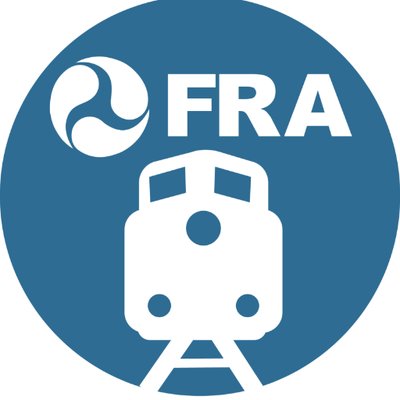 WASHINGTON — The Federal Railroad Administration today proposed a rule that would require railroads to provide emergency breathing apparatus for locomotive crews who are operating trains carrying hazardous materials that would pose an inhalation danger in the event of a release during a derailment.
WASHINGTON — The Federal Railroad Administration today proposed a rule that would require railroads to provide emergency breathing apparatus for locomotive crews who are operating trains carrying hazardous materials that would pose an inhalation danger in the event of a release during a derailment.
The proposed rule, the FRA says, would protect crews from inhalation hazards that include chlorine gas, anhydrous ammonia, ethylene oxide, and anhydrous hydrofluoric acid. Together these four products make up over 90% of poisonous inhalation hazardous material shipments by rail.
The rule would require railroads to provide for storage of emergency breathing apparatus in locomotive cabs to enable employees to access the respirators quickly in the event of a release of a hazardous material that poses an inhalation hazard.
The National Transportation Safety Board recommended that the FRA require railroads to provide emergency breathing apparatus after train crew fatalities that followed collisions in 2004 and 2005. Congress in 2018 mandated that the FRA issue regulations regarding emergency breathing apparatus.
Comments can be filed with the FRA within a 90-day period following publication of the proposed rule in the Federal Register.














The cost to equip every locomotive would be large. Why not just issue crew on the train the gear and require them to turn it in at the end of the run? So instead of having 12 sets on the train there are only 2 or 3. That’s at least a 75% savings. Or, like all the other requirements placed on all railroads, from the shortest shoreline to the Class I’s flush with BILLIONS in cash, let’s just gouge those corporate SOBs for all they have. Criminy.
After dealing with the Federal bureaucracy for over 20 years, nothing surprises me. Despite the comments above, none of this is particularly the fault of any president or any transportation secretary. Projects like this never get to their levels and are handled by low-level bureaucrats who show little if any leadership. While this might seem important to us reading the Forum, it doesn’t rise to the importance that gets higher levels involved.
BNSF does have breathing equipment for use in the longest tunnels. Flathead Tunnel instructions from the employee timetable (there are similar instructions for the Cascade Tunnel):
A Tunnel Emergency Respirator Program is in place. This
program is designed to offer the highest level of respiratory
protection to train crews and other persons riding trains
through long tunnels. Employees who ride freight trains
through the Flathead Tunnel must be trained on the use of Self-
Contained Breathing Apparatus (SCBA) and have an SCBA in
their possession when traveling through the tunnel.
When hours of service has expired, employees may take the
SCBA with them to the motel or home. Individuals will not be
allowed to work in the Whitefish pool without having been
trained on the use of an SCBA.
SCBA Air Tanks have been placed in each bay of the tunnel.
Whenever one is used, notify the dispatcher immediately and
advise the trainmaster at Whitefish the number of air tanks
used and where they were left so that they can be recharged
at once. Used air tanks must be left at Spokane or Whitefish.
Can the wheels of government turn any slower?
Gee, it wouldn’t have anything to do with who lead the last administration.
Funny and no derogatory comments so far about the last Sec of Transportation who got her job through family connections and definitely had conflicts of interest!!! If this had been done on the current SOTs watch, I am sure we would be hearing about him on this comment list
Exactly Jacob, many have short memories about the last Administration.
Lets remember that the original suggestions started back in 2005 and covered several administrations. The fact is that this bureaucracy is and has been inept for many a year.
I don’t think that locomotives breaking down in say the Moffat tunnel, Cascade tunnel, and Flathead tunnels are common but, better safe than sorry probably. I know the Canadian Pacific Railway does have emergency gear in the cabs of their locomotives, but that’s because the two spiral tunnels don’t have ventilation equipment.